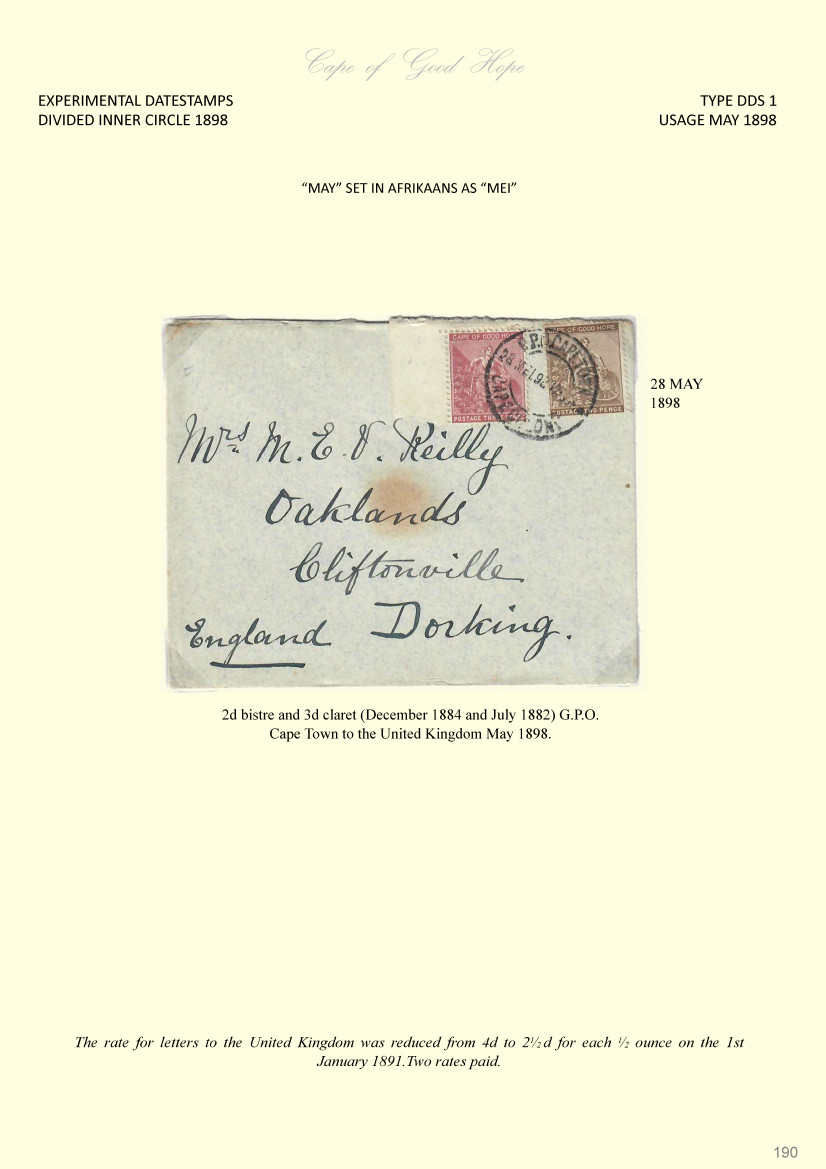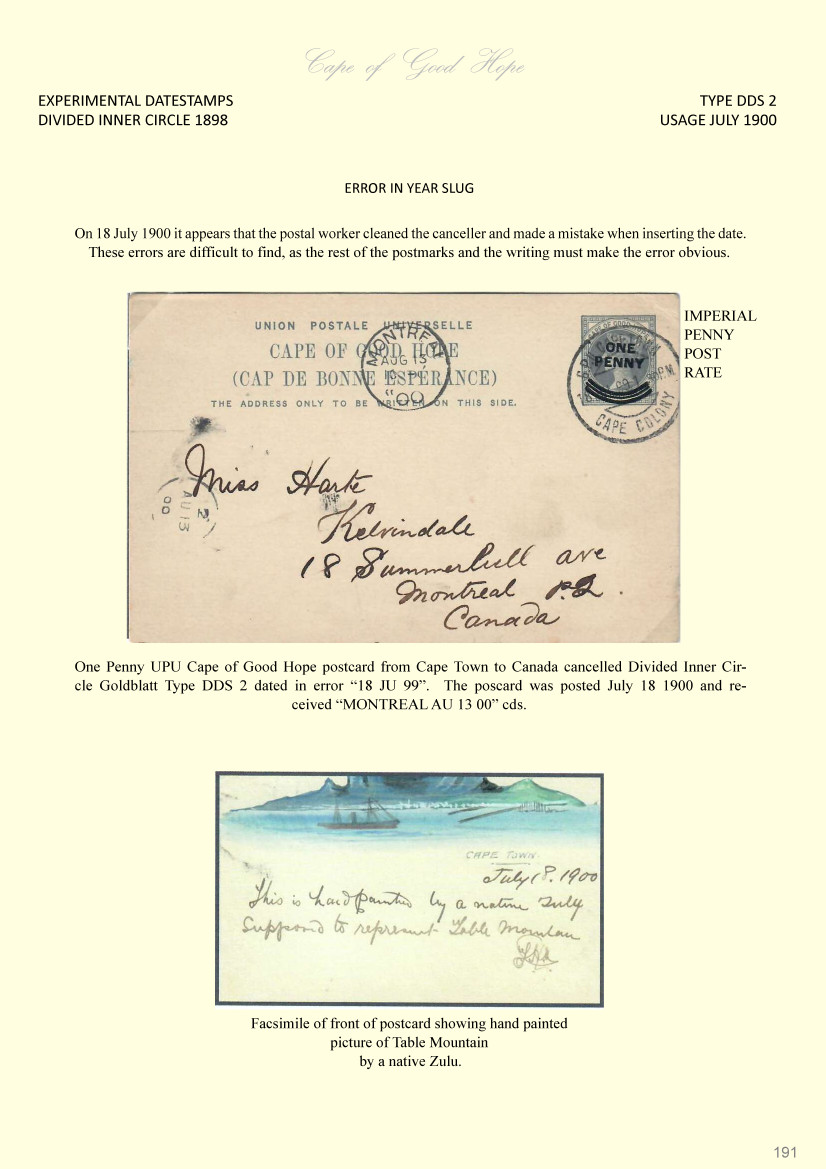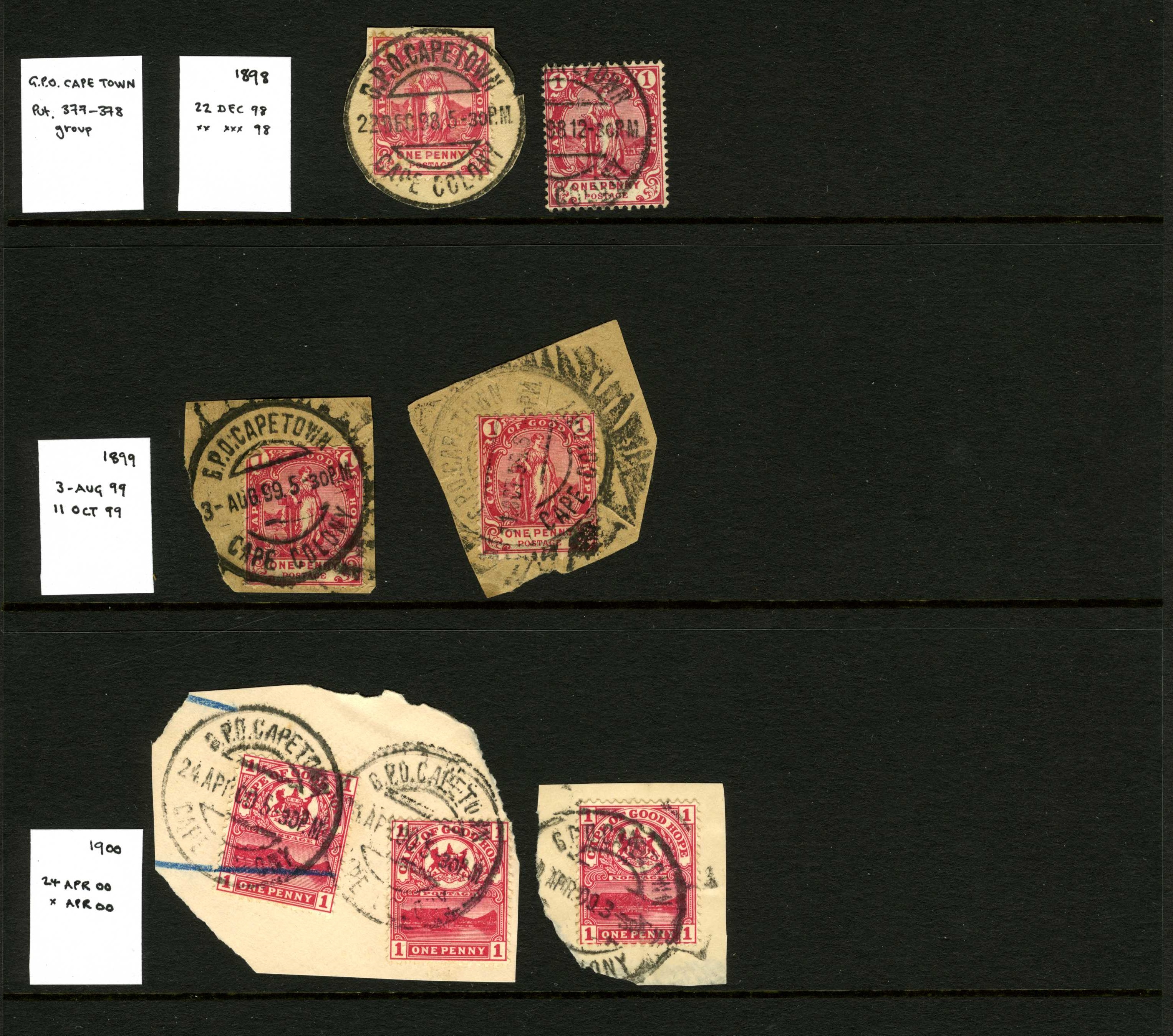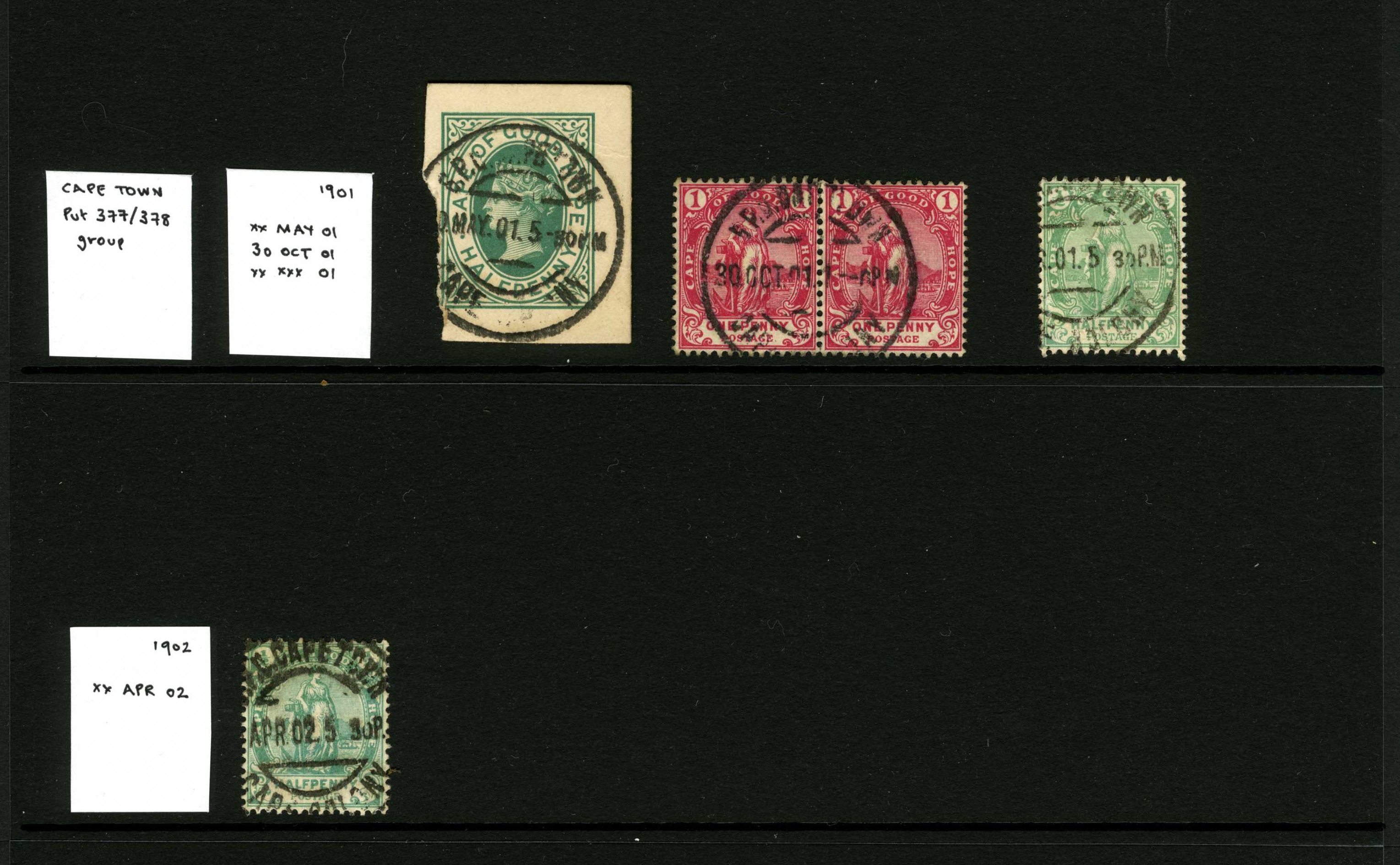Cape of Good Hope Divided Inner Circle Datestamp - 1898
Quote from yannisl on November 14, 2020, 4:29 pmThanks for the scans from Putzel, appreciated and help to clear my own observations that essentially there were only two types. I interpret Putzel's comment 'broken' as 'damaged' and not a different handstamp. There are many variants like this.
Thanks for the interesting observation regarding March and May being set in Afrikaans. I picked that on the way for Mei, but missed the one for March! I thought given the period, it was some patriotic statement from a postal worker. I attach scan for the latter. Also I attach one with "99" instead of "00".
Looking forward to your second post.
Thanks for the scans from Putzel, appreciated and help to clear my own observations that essentially there were only two types. I interpret Putzel's comment 'broken' as 'damaged' and not a different handstamp. There are many variants like this.
Thanks for the interesting observation regarding March and May being set in Afrikaans. I picked that on the way for Mei, but missed the one for March! I thought given the period, it was some patriotic statement from a postal worker. I attach scan for the latter. Also I attach one with "99" instead of "00".
Looking forward to your second post.
Uploaded files:
Quote from Bas PAYNE on November 14, 2020, 10:55 pmHow many different date-stampers with two half-moons were there?
Goldblatt says that there were two date-stampers. In DDS02, the two half-moons are unbroken; while in DDS03, both half-moons have symmetrically-placed breaks in their straight base-lines, the upper break being shorter than the lower break. His DDS02 is dated 6 SEP 99, nearly two months earlier than DDS03 (30 OCT 99), which suggests that DDS03 could be a worn/damaged/altered DDS02; however Goldblatt says that wear is not the cause, and that "from many examples seen the variants seem to be constant".
Putzel's account is consistent with and appears to strengthen Goldblatt's account. His figure of Put 377, dated 25 APR 00, has two unbroken half-moons, as in Goldblatt's DDS02, showing that the half-moons were unbroken in April 1900, while his Put 378, dated 6 DEC 99 as the same two symmetrical Goldblatt's DDS03, confirming that DDS03 already had these breaks in late 1899. His Put 377a, dated 19 MAY oo, has a shorter break in the base-line of the upper half-moon and an unbroken lower half-moon, which, he suggests,is a later worn variant of Put 377 (/DDS02).
However, the examples illustrated below, arranged in chronological order, suggest that things may not be that simple. Some can be fitted into the framework of the two date-stampers suggested by Goldblatt/Putzel; however just as many do not From these, fairly convincing groups can be proposed which do not fit.
Series A, for instance, starts with examples dated 11 OCT 99, 14 MAY 00 and 5 JUL 00 in which the base-line of the upper half-moon is unbroken while the base-line of the lower half-moon has breaks at both ends; by MAY 01, a third break appears right of centre in the base-line of the upper half-moon. Series B includes examples dated 3 AUG 99, 25 MAY 00, 23 JUN 00 and 4- JUL 00 in which the base-line of the upper half-moon is unbroken while the base-line of the lower half-moon is broken at both ends leaving a small segment left of centre with a downward-pointing right end and a small remnant at the right end. Neither group can be fitted convincingly into DDS02 or DDS03, even making allowance for variable pressure and inking.
It seems most likely that there were at least four and possibly more cancellers of this type, and this doesn't seem inherently unlikely, given the volume of mail handled by Cape Town at the time; but more detailed study of many more examples is needed to test this suggestion.
How many different date-stampers with two half-moons were there?
Goldblatt says that there were two date-stampers. In DDS02, the two half-moons are unbroken; while in DDS03, both half-moons have symmetrically-placed breaks in their straight base-lines, the upper break being shorter than the lower break. His DDS02 is dated 6 SEP 99, nearly two months earlier than DDS03 (30 OCT 99), which suggests that DDS03 could be a worn/damaged/altered DDS02; however Goldblatt says that wear is not the cause, and that "from many examples seen the variants seem to be constant".
Putzel's account is consistent with and appears to strengthen Goldblatt's account. His figure of Put 377, dated 25 APR 00, has two unbroken half-moons, as in Goldblatt's DDS02, showing that the half-moons were unbroken in April 1900, while his Put 378, dated 6 DEC 99 as the same two symmetrical Goldblatt's DDS03, confirming that DDS03 already had these breaks in late 1899. His Put 377a, dated 19 MAY oo, has a shorter break in the base-line of the upper half-moon and an unbroken lower half-moon, which, he suggests,is a later worn variant of Put 377 (/DDS02).
However, the examples illustrated below, arranged in chronological order, suggest that things may not be that simple. Some can be fitted into the framework of the two date-stampers suggested by Goldblatt/Putzel; however just as many do not From these, fairly convincing groups can be proposed which do not fit.
Series A, for instance, starts with examples dated 11 OCT 99, 14 MAY 00 and 5 JUL 00 in which the base-line of the upper half-moon is unbroken while the base-line of the lower half-moon has breaks at both ends; by MAY 01, a third break appears right of centre in the base-line of the upper half-moon. Series B includes examples dated 3 AUG 99, 25 MAY 00, 23 JUN 00 and 4- JUL 00 in which the base-line of the upper half-moon is unbroken while the base-line of the lower half-moon is broken at both ends leaving a small segment left of centre with a downward-pointing right end and a small remnant at the right end. Neither group can be fitted convincingly into DDS02 or DDS03, even making allowance for variable pressure and inking.
It seems most likely that there were at least four and possibly more cancellers of this type, and this doesn't seem inherently unlikely, given the volume of mail handled by Cape Town at the time; but more detailed study of many more examples is needed to test this suggestion.
Uploaded files:







